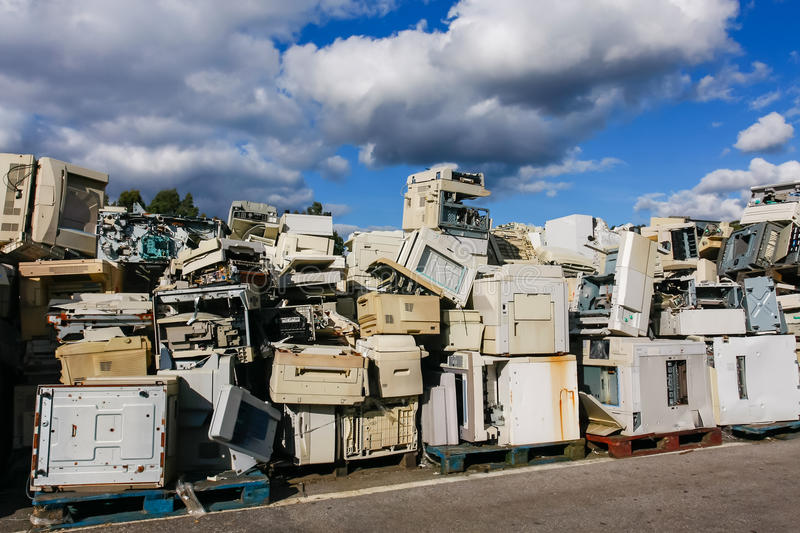
We change our hair like we change our mind like we change our electronic devices. What’s left is perhaps a regrettable hair cut and a whole lot of e-waste. What do we do with it – well, the e-waste at least?
When we let electronics sit collecting dust, we limit their life cycle – ending it in the kitchen junk drawer or storage stall. Worse, when they are improperly disposed, like they often are, they end up in landfill or a trash incinerator.
- 70% of our overall toxic waste is e-waste.
- 85% of our e-waste is sent to landfills and incinerators.
- Every year, we generate around 40 million tons of electronic waste every year (that’s like throwing 800 laptops out every second).
When used electronics make their way from the junk drawer and into the garbage can, while they may be gone from our immediate environments, they are very much present in our larger ones.
Most of our e-waste makes it to landfills or to the incinerator, where they will be integrated into our earth and air. Electronics have difficulty degrading. They also have toxic materials in them that, when exposed to elements as they will be in a landfill or incinerator, can cause them to leach into the surrounding environment. These toxins can cause the following health risks when improperly disposed and left to inhabit the environments we live in:
- Lead: can effect every organ system in our body by mimicking or inhibiting the actions of calcium and interact with proteins; can cause neurological damage, particularly in children
- Mercury: toxic to nervous, digestive, immune system; can cause blindness, muscle weakness, and other neurological effects
- Arsenic: carcinogen and neurotoxin
- Beryllium: continued exposure can cause skin diseases and acute beryllium disease, lead to lung cancer
Neglecting to appropriately manage these chemicals neglects our health; Neglecting to make use of the components of electronic devices neglects their health and life cycle. When we waste the potential of our electronics, that’s when they become e-waste.
We can improve the lives of our electronic devices, the people that manage them, and ourselves when we refurbish and recycle them intentionally. Bring your used electronics to a used electronics collection and recycling event. Be sure to make note of the items below that can and cannot be accepted by our partner, Electronics Value Recovery.
Acceptable Materials:
- AC adapters
- Cell phones
- Circuit boards
- Desktops
- Docking stations
- Flat screen monitors
- Hard drives
- Keyboards and mice
- Laptops
- Lithium Batteries
- Networking supplies
- Processors
- RAM
- Servers
- Tablets
- Wire
Prohibited Items:
- Ammunition
- Combustible materials
- Fluorescent light bulbs
- Furniture
- Hazardous materials
- Household appliances
- Items containing radiological material
- Liquids
- Medical Waste
- Trash
Charge Back Items:
- Batteries
- Christmas lights
- CRT monitors
- Flat screen TVs
- Low grade consumer electronics (heavy plastic)
- Printers
- Toner/ink
Diving deeper.
Check out these podcast episodes to learn more about the value of used electronics.






